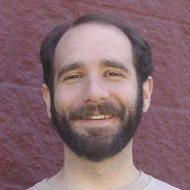 On Monday, Tu Youyou, Satoshi Omura, and William Campbell were awarded the Nobel Prize in Physiology and Medicine, for their discoveries of the antimalarial artemisinin, and avermectin, a key part of treatment for the parasitic diseases river blindness and lymphatic filariasis. On Tuesday, Takaaki Kajita and Arthur McDonald were awarded the Nobel Prize in Physics, for their discovery of neutrino oscillations, which proved that neutrinos have mass.
On Monday, Tu Youyou, Satoshi Omura, and William Campbell were awarded the Nobel Prize in Physiology and Medicine, for their discoveries of the antimalarial artemisinin, and avermectin, a key part of treatment for the parasitic diseases river blindness and lymphatic filariasis. On Tuesday, Takaaki Kajita and Arthur McDonald were awarded the Nobel Prize in Physics, for their discovery of neutrino oscillations, which proved that neutrinos have mass.
Reading about the discoveries these scientists made, I was struck by the role serendipity played in all of them. The Kamioka Observatory was built to find evidence of proton decay (which would have been a Nobel-worthy discovery itself), and the effects of neutrinos were noise that had to be filtered out. In time, the researchers realized that the neutrinos themselves were not mere noise, but revealed a different form of new physics: neutrinos have mass. It wasn’t the discovery that the Japanese and Canadian researchers expected, but it was welcome nonetheless.
The discovery of avermectin involved an equal measure of serendipity. As The New York Times puts it, co-discoverer Satoshi Omura “wondered whether he deserved the prize,” or if the bacteria deserved all the credit. They quote an interview with Japan’s NHK, where Omura said: “I have learned so much from microorganisms and I have depended on them, so I would much rather give the prize to microorganisms.” The key to the lifesaving drug was a bacterium discovered in soil from a golf course. The Times explains that Omura “always carries around a plastic bag in his wallet so he can collect soil samples.”
Needless to say, it took substantial effort to figure out that there was something special in that sample, and to purify and tweak the compound to make a successful drug. Likewise with Tu Youyou’s discovery of artemisinin, which drew on a traditional Chinese herbal remedy as inspiration, modifying it to preserve the active ingredient. Many herbal remedies lack any substantial pharmaceutical effect, so sifting through the many available herbal remedies to find the right plant, and the right compound in the plant, took tremendous care and skill, and an appreciation for traditional knowledge and natural history. And more than a bit of luck.
In science, to a large extent, you make your own luck. Omura’s habit of carrying collection bags everywhere made it a lot more likely that he’d collect the sample he needed, and years of work gave him the skills to recognize what to collect and when he had a major find. Tu’s search involved archival searches through traditional herbal recipes and laboratory screenings of over 2,000 herbal preparations. The work at the Super-Kamiokande detector was an expansion of an unsuccessful earlier experiment, repurposed to great effect thanks to the scientists’ willingness to ask new questions with the same data. None of these researchers knew their research was going to lead where it did, but their ability to recognize a lucky break and take full advantage of it set these researchers on a course to Stockholm, and set the world on a path to health and enlightenment.

